Making a Flourless Chocolate Bombe Base
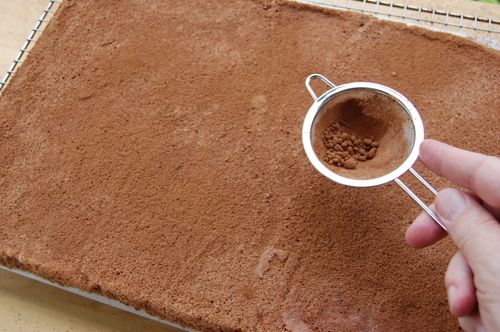
This is actually very much like a sponge cake, though it has no flour whatsoever. It’s just the type of nifty and versatile invention Rose Levy Beranbaum is famous for. Yes it has some steps, but if you’ve made spongecake before it’ll be second nature. Start by preheating your oven to 375 degrees Fahrenheit. Then prepare your pan. Using two sheets of parchment lay one down on a sheet pan sprayed with cooking spray, but let several inches hang over the edge. Spray the top.
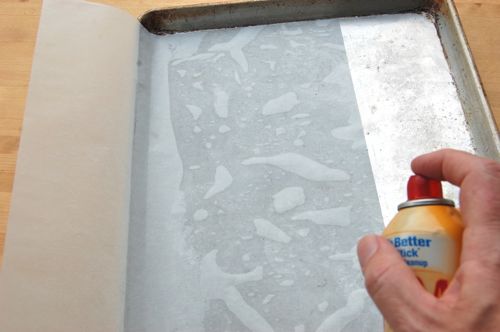
Lay on the other sheet, likewise leaving some to hang over the side. Spray everything.

Now for the chocolate. Break it up and place it in a microwave-safe bowl.
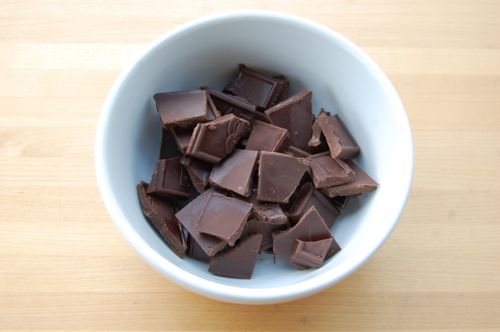
Zap it in the microwave for ten seconds on high, then stir. Repeat four or five times until it looks about like this:
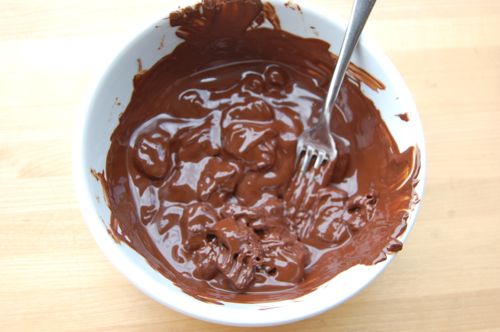
Then stir, letting the residual heat melt the chocolate the rest of the way.
STOP! Don’t eat any of it.

Now combine the yolks and half the sugar in the bowl of a mixer.
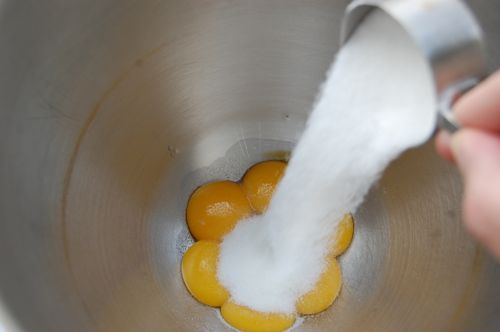
Whip about five minutes on high until thick ribbons form.

Add the melted chocolate.
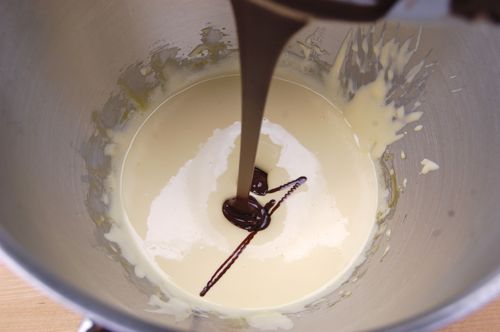
Stir the two together until they’re incorporated. Scrape the mixture into a large bowl and set it aside.
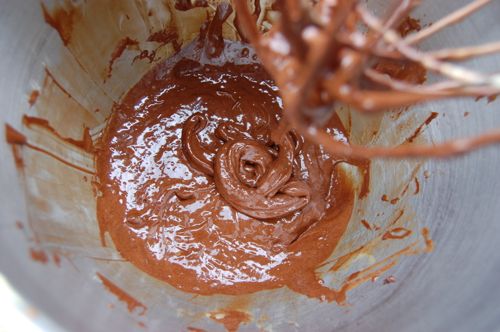
Wash the whip and bowl so you can make the meringue. Don’t get all freaky with the washing thing. Despite what you’ve heard, a couple of little flecks of a fatty mixture won’t ruin the foam. Not remotely.
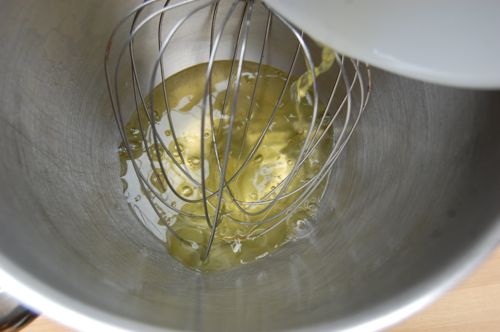
Whip for about 30 seconds until the mixture is foamy, then add the creme of tartar.

Keep whipping another 2-3 minutes until the mixture is at soft peaks. Begin adding the remaining 1/4 cup sugar.
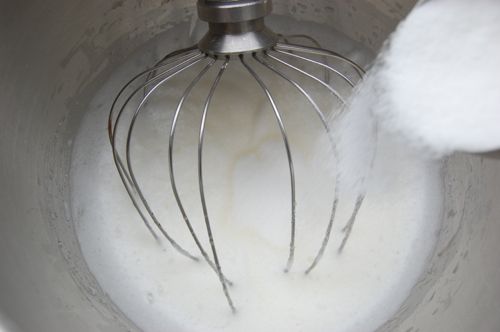
Whip to stiff peaks or thereabouts. Ooh…artsy!
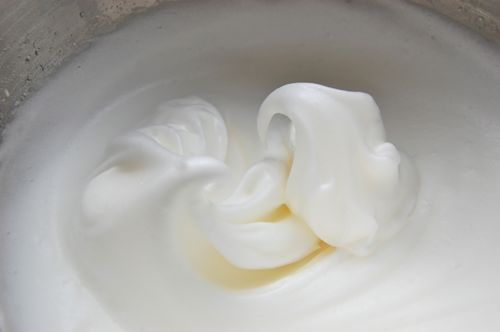
Stir one third of the meringue into the chocolate mixture. Yes I said stir, round and round with your implement at this angle. This will lighten the mixture so the rest of the meringue can be folded in.
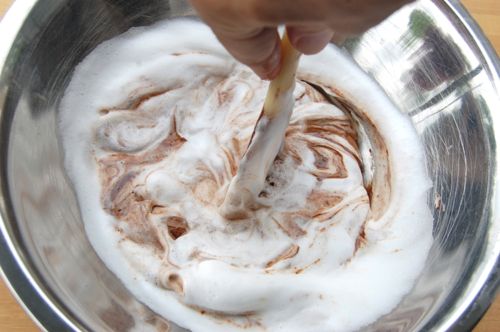
Now fold in the second third…

And the third third. Makes sure to leave a few small streaks.
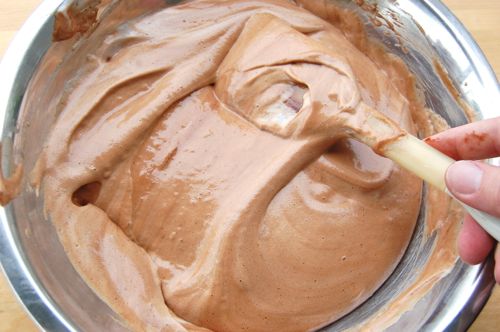
Scrape the mixture into your prepared pan and smooth it out. Get a little obsessive here so the layer is nice and even. .
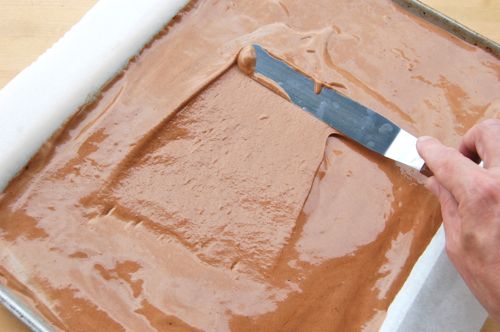
Bake about 15 minutes until the cake springs back when you touch it in the center.
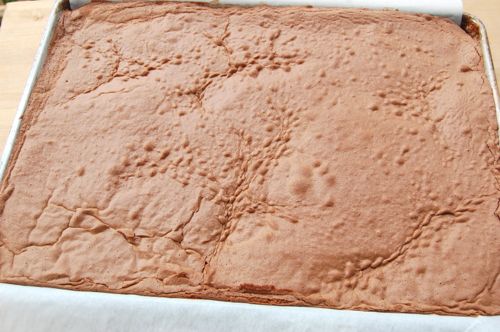
Cool it on a rack for 5 minutes, then loosen the edges with a butter knife.
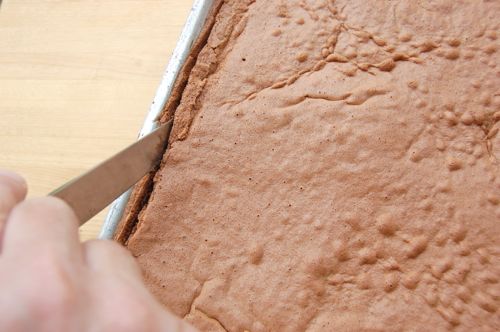
Dust the top with cocoa powder.
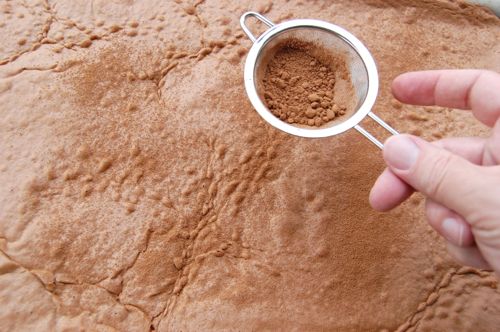
Put on a sheet of parchment.
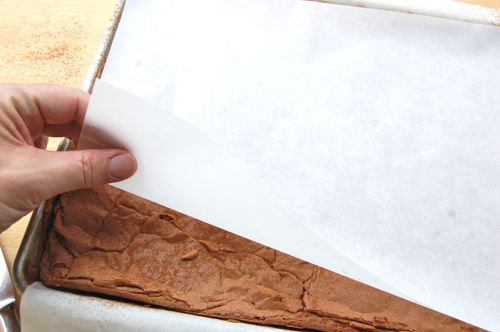
Then an upside-down rack.
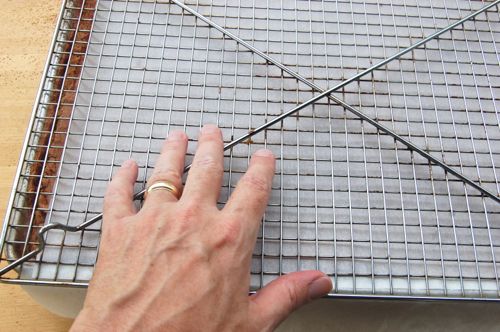
Flip everything.

Remove the pan and gently peel back the first sheet of parchment from the inside of the sheet outward.

Now the other piece.

Dust the cake layer with more cocoa…
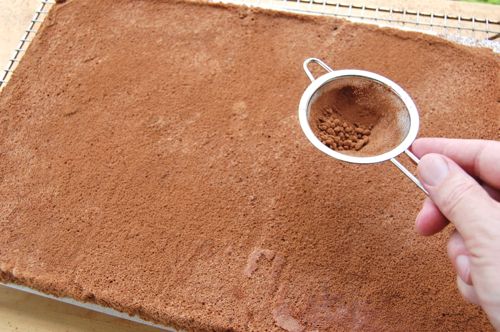
…lay on more parchment and let the cake cool completely. Freeze the cake until you’re ready to use it.
Whenever I make this sort of thing I minimise dishwashing by beating the egg whites first, setting them aside, then use the unwashed bowl to beat the yolks. It always seems to work just fine – is there any reason I shouldn’t do it?
Not that I can think of. If it works works for you it seems reasonable. I’ll try it!
– J
Okay, so I know I am a little slow on the uptake but it wasn’t until I started to fold in the egg whites that I realized I was making CHOCOLATE MOUSSE! So except for the addition of whipped cream this cake is really baked mousse. My niece and nephew are never going to believe it. (I love it when I can blow their little minds with good, homemade food)
The technique for this batter doesn’t pertain to my question as the method is different, but you know what puzzles me? When making meringue, they tell you that you can’t have a speck of egg yolk (or any fat) in the egg whites or they won’t whip up well. Yet in many sponge cake recipes, you’re instructed to whip whole eggs and sugar, and they whip up to triple in volumn when whipped for 5-10 minutes. I haven’t tested what happens if I would try to brown the whole egg mixture as you do with meringue, but it puzzles me that they will triple in volumn. Why’s that?
Hi Susan!
That’s an excellent question. The reason so many sponge cake recipes call for whole egg foam is because whole eggs make great foams…but only for a while. After a few minutes the bubbles start to pop and they fall. That has to do with the action of fat at the bubble surfaces. For more on that do a search for a post called Fat: The Foam Foiler, that will provide you with a more science-y answer.
Cheers and thanks for the question!
– Joe
Thanks, Joe. Wow..you have such good info on your site. I often get stuck here because one post’s answer leads to another post and with each I get a more complete answer to my questions. I am so loving this site!
Susan, I appreciate that. Thanks very much and please get in touch if I can answer any question!
– Joe
Hi Joe! Loved your page! I have a question… my partner has type 2 diabetes and she can’t have neither flour nor sugar, that’s why this recipe caught my attention. Is there any replacement for the sugar? Thanks in advance,
Cecilia.
Hey Cecilia!
This would be a tough one to reformulate, not only because it calls for sugar, but there’s sugar in the chocolate as well. Honestly I’m not sure if a replacement like Splenda would whip up like sugar with the egg yolks. However it’s worth an experiment. If you can get that to work then you can probably go ahead using unsweetened Baker’s chocolate, cutting the total amount of chocolate down by about 20% to compensate for the sugar you’re losing in the bargain. It’s worth a try, methinks! Let me know how it goes!
– Joe
Hi Joe
Thanks for your recipe, though it make perfect sense to me I wonder if I can add some almond or hazelnut meal to add more body and nutrition.
Thanks
Hi Mely!
Yes you certainly may add some nut flour if you like. I would add it to the chocolate mixture before the foam folding step!
Have fun!
– Joe
Hi, I’m just curious as to how this differs to your normal flourless chocolate cake 🙂
Hey L!
They are very similar, save for the fact that this base has added sugar (most flourless chocolate cakes don’t). That sugar gives the egg foam extra stability (it creates a syrup that reinforces the air bubble walls). More stability means that bigger bubbles remain in the batter even as it bakes, and that gives the finished base its spongy texture. Regular flourless doesn’t have that texture, it’s more putty-like and not nearly as light flexible. Does that make sense?
Thanks for the question!
– Joe
Thanks, that makes a lot of sense 🙂
So could you interchange the recipes, or would this not be appropriate for making a taller cake?
I’ve never tried making a thicker cake out of it before, L, but I see no reason why it wouldn’t work. If you try it let me know how it goes — and send pictures!
– Joe